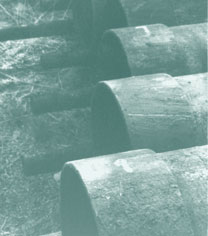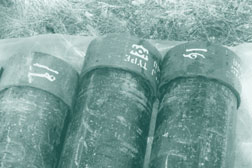 |
||||||||||||
|
Before Cleaning |
||||||||||||
 |
||||||||||||
|
After Cleaning |
||||||||||||
Surging (agitation of the well with a plunging device called a surge block) is another traditional technique. Surging is somewhat effective in reaching into the surrounding aquifer, but doesn't provide consistent cleaning throughout the length of the screen. Surging is most effective near the bottom of the screen and progressively less so the closer the surge block gets to the top of the screen.
Surging can cause channeling through the screen into the porous formation, leaving layers of silty, finer-grained particle formations undeveloped. If obstructing materials such as silt, sand and scale aren't physically removed from the well and its surrounding formation, the process can't truly be called development.
Over the years, a wide variety of chemical solutions have been devised to treat specific types of biological deposits and mineral scale. On their own, simply poured into a well, even the best chemicals have only limited effectiveness. Physical cleaning action is also required. Unfortunately, even today, most chemicals are hazardous and often aren't handled with sufficient care, sometimes endangering personnel, the aquifer, and the well site. Great care should always be taken in the application, removal and disposal of chemicals.
For any of these techniques to be truly considered development, the scale and other debris dislodged from the well, and any chemicals used in the process, must be pumped out of the well for proper disposal. Redistribution of debris is not development. In fact, methods that simply blow holes into a blocked or biofouled formation can actually accelerate the reoccurrence of blockage and biofouling.
To determine if hydro-fracturing is right
for
your well, contact us today!
509-466-5078 · 800-368-0998
Email: djminden@msn.com
Scott Graphics © 2018 All Rights Reserved
